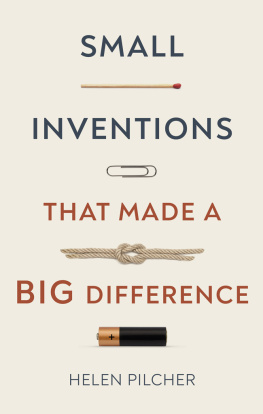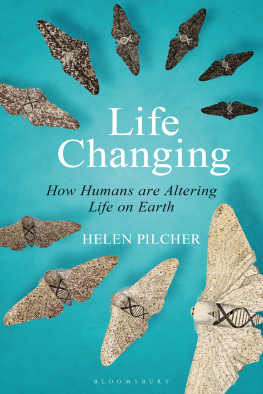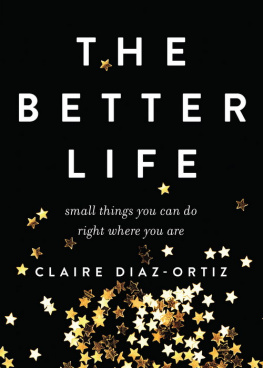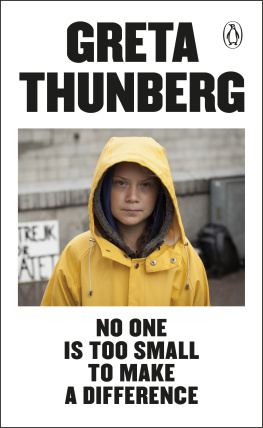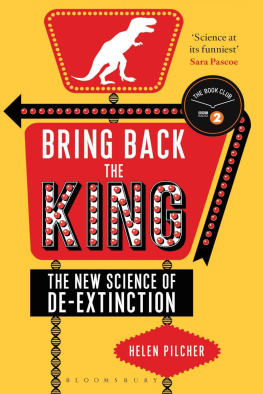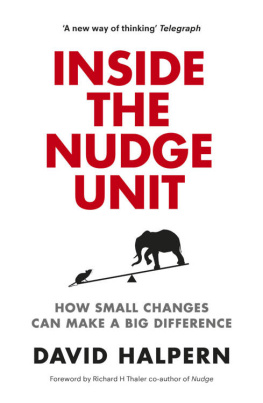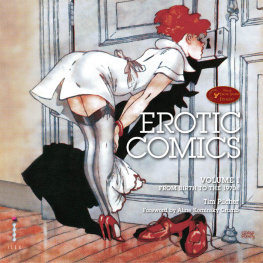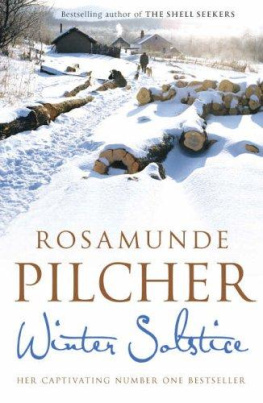SMALL
INVENTIONS
THAT MADE A
BIG DIFFERENCE
For Amy, Jess, Sam, Joe, Mum and Higgs the Dog Particle
Published by Welbeck
An imprint of Welbeck Non-Fiction Limited
Part of Welbeck Publishing Group
20 Mortimer Street,
London W1T 3JW
Text copyright Helen Pilcher, 2021
Illustrations copyright Hannah George, 2021
Helen Pilcher has asserted her right under the Copyright, Designs and Patents Act, 1988, to be identified as Author of this work.
All rights reserved. No part of this publication may be reproduced, stored in a retrieval system, or transmitted in any form or by any means, electronically, mechanical, photocopying, recording or otherwise, without the prior permission of the copyright owners and the publishers.
A CIP catalogue record for this book is available from the British Library
ISBN
Hardback 9781787397873
eBook 9781802791518
Typeset by seagulls.net
Printed and bound by CPI Group (UK) Ltd, Croydon, CR0 4YY
2 4 6 8 10 9 7 5 3 1

www.welbeckpublishing.com
Contents
Introduction
A candle in the darkness. A drop of whisky in a glass of Coke. A newborn baby, just home from the hospital. Sometimes, little things can have a big impact. Ask people to list those inventions that matter the most, and they tend to think big. Computers, suspension bridges and aeroplanes. The wheel, the printing press and the steam engine. Theyre all influential, substantial and physically hard to miss, but what of the little inventions? The tiny and the diminutive are easily overlooked, and as a result, their place in history often goes unremarked, but little can be big. Small can be mighty. The tiddly and the miniscule can be significant and impactful.
Sandwiched between these covers are 50 small inventions that have all made a big difference. Of course, size is relative. Next to an elephant, a mouse looks microscopic. Next to an ant, the same rodent now seems like a behemoth. In popular culture, large distances are frequently measured in units of to the Moon and back, which is a round trip of more than 750,000 km. Large weights are measured in numbers of African elephants, with a single pachyderm tipping the scales at over 5,000 kg. Tiny items, in contrast, are often compared to the width of a human hair, which is about a hundredth of a centimetre; or to the weight of a grape, which is about a million times less than the weight of an African elephant. These well-meaning metrics are meant to provide context, but they can be confusing. Its for this reason that I propose my own metric for smallness.
When I was a kid, I had a pet guinea pig. The long-haired legend was the perfect pet. He was active enough to be interesting, but calm enough to be cuddled. He was vocal enough to squeal delightedly when I came home from school, but quiet enough to live in the house. He was also just the right size; not so large that he couldnt be picked up, but not so small that he could disappear down the back of the sofa. Guinea pigs are a happy halfway point between the to the Moon and back and the width of a human hair, and the African elephant and the grape. So, for the purpose of this book, anything more petite than a guinea pig shall be officially accepted as small.
But what constitutes a big difference and to whom should that difference apply? Dog biscuits are smaller than a guinea pig, so they are of an appropriate size. They also have a huge impact on my dogs quality of life, so in a sense, you could say that they make a big difference. But is my dog likely to read this book? Hes smart, but not that smart. Hes interested, but not that interested. Barking at bin bags will always take precedence over perusing the written word, so its for this reason that I have chosen to omit his needs. Focusing instead on the solely human realm, should the big difference apply to humanity as a whole, or can a difference be big when it affects just a few? Tampons and sanitary products are used by half of the people on Earth, so the impact of these inventions is huge. In contrast, less than 0.0005 per cent of the worlds population are fitted with a pacemaker, but the difference to them is life-changing.
The impact of an invention can be subjective, slippery and hard to define. Although some innovations make their inventors rich, it isnt always about the money. Inventions can become significant for many reasons, such as their impact on health, culture or subsequent technological innovation. The integrated circuit, for example, paved the way for electrical devices to become smaller, cheaper and more powerful, heralding a new age of super-fast computers and home electronics. It also helped to put a man on the moon. Biscuits, in contrast, may seem like a poorly judged comparison, and yet
This compendium is not based on some survey or humourless piece of academic research. It comes from the heart. Biscuits make me happy, socks bring me comfort, and sporks bring me joy. I make no apology for this. If you wish to dispute their place in this book, drop me an email, but I warn you: I shall be far too busy eating digestives with spoon/fork hybrid to take much notice. My feet will be toasty too.
In the course of researching this book, I have uncovered many entertaining stories and many remarkable facts. Did you know, for example, that once upon a time, frogs were used as pregnancy tests, animal intestines were used as condoms, and ants were used to suture wounds? Isnt it good that technology has moved on?
Often, these stories tell us as much about society and culture as they do about technology itself. Take deodorants. For their first 50 years of their existence, these odour-muffling potions were marketed solely at women because men, apparently, didnt think they needed them! Theres a similar whiff of discrimination surrounding the pocket, which was initially denied to women because men wore the trousers, both literally and metaphorically.
Mirroring this prejudice, we see comparatively few female inventors gracing our history books. Looking back in time, they either didnt exist or have been airbrushed from the testosterone-fuelled narrative. Weve all heard of Alexander Graham Bell and Leonardo da Vinci, but who among us is familiar with the work of Beatrice Shilling or Sarah Little Turnbull? Both were brilliant inventors, whose small inventions made a big, big difference, and yet neither is well known. They should be. Their brilliance, and the brilliance of all other female inventors, has been diminished, so where possible, I choose to blow a trumpet for the overlooked and the under-represented.
The process of invention is also illuminated. Its commonly assumed, for example, that Thomas Edison invented the light bulb. We have this idea of a lone genius, beavering away on some interminable problem, only to be liberated by the flash-like arrival of some ephemeral eureka moment. The idea is of a perfect, fully formed idea that suddenly pops into the brain, and translates directly to some major innovation. For the most part, this is a myth. There were, for example, at least 22 light bulbs on the scene before Edison came along and had his own light bulb moment. Similarly, Lszl Br did not invent the biro. Ballpoint pens were around long before Br left his mark. Br simply improved and commercialized the idea. The process then, is one of iteration, of trial and error, of reflection and refinement. As Isaac Newton once famously said, if I have seen further, it is by standing upon the shoulders of giants. We learn from the past, and use it to inform the future.

